Interstitial Lung Disease Classification
Interstitial lung disease classification. Interstitial lung diseases ILDs are challenging to diagnose requiring integration of multiple complex features that are often difficult to interpret. Interstitial Lung Disease ILD comprises more than 200 lung defects affecting patients ability to breathe. These diseases also harm the lungs in similar ways.
Classifications of interstitial diffuse lung disease in adults and children have undergone significant revision in recent years with advances in our understanding of new entities and the biology and prognostic significance of certain histologic patterns. RESPIRATORY SOCIETY CLASSIFICATION OF IDIOPATHIC INTERSTITIAL PNEUMONIAS. Childhood interstitial in-ter-STISH-al lung disease or chILD is a broad term for a group of rare lung diseases that can affect babies children and teens.
Impact of Interstitial Lung Disease Classification on the Development of Acute Exacerbation of Interstitial Lung Disease and Prognosis in Patients with Stage III Non-Small-Cell Lung Cancer and Interstitial Lung Disease Treated With Chemoradiotherapy. The contributions of the European Respiratory Society Task Force on Interstitial. And 3 clinical epidemiological studies.
Knowledge achieved in recent years has resulted in the publication of the new classification of idiopathic interstitial pneumonias according to which there are three groups. Major rare and unclassified. 2018 May 229 112054-2060.
In the updated classification the major entities have been preserved and grouped into a chronic fibrosing IIPs idiopathic pulmonary fibrosis IPF and idiopathic nonspecific interstitial pneumonia NSIP b smoking-related IIPs respiratory bronchiolitisassociated interstitial lung disease RB-ILD and desquamative interstitial pneumonia and c acute or subacute IIPs. Founded in 1905 to combat TB the ATS has grown to tackle asthma COPD lung cancer sepsis acute respiratory distress and sleep apnea among other diseases. Detection screening and classification of interstitial lung disease in patients with systemic sclerosis Early screening to diagnose ILD is feasible.
AMERICAN THORACIC SOCIETY 25 Broadway New York NY 10004 United States of America Phone. Feature extraction is initially done using textons and then LTCOP method is used. Diagnosis of interstitial lung disease ILD using pattern classification consists of image preprocessing feature extraction selection and classification.
These diseases have some similar symptoms such as chronic cough rapid breathing and shortness of breath. Disease and inflammatory disorders the latter now expanded to include cryptogenic organising pneumonia COP lymphocytic interstitial pneumonia LIP cellular NSIP respiratory bronch-iolitis with associated interstitial lung disease RBILD and desquamative interstitial pneumonia DIP were exactly as reported previously.
Epidemiological studies on interstitial lung diseases ILDs may be schematically subdivided into the following major types.
10 divides ILD classification problem into two levels. Interstitial lung diseases ILDs are challenging to diagnose requiring integration of multiple complex features that are often difficult to interpret. Rare lung diseases such as lymphangioleiomyomatosis LAM. Interstitial Lung Disease ILD comprises more than 200 lung defects affecting patients ability to breathe. Major rare and unclassified. In the updated classification the major entities have been preserved and grouped into a chronic fibrosing IIPs idiopathic pulmonary fibrosis IPF and idiopathic nonspecific interstitial pneumonia NSIP b smoking-related IIPs respiratory bronchiolitisassociated interstitial lung disease RB-ILD and desquamative interstitial pneumonia and c acute or subacute IIPs. Disease and inflammatory disorders the latter now expanded to include cryptogenic organising pneumonia COP lymphocytic interstitial pneumonia LIP cellular NSIP respiratory bronch-iolitis with associated interstitial lung disease RBILD and desquamative interstitial pneumonia DIP were exactly as reported previously. 2 identification of aetiological factors. Knowledge achieved in recent years has resulted in the publication of the new classification of idiopathic interstitial pneumonias according to which there are three groups.
This article reviews a pragmatic approach to ILD diagnosis and classification focusing on diagnostic tools and strategies that are used to separate different subtypes and identify the most appropriate management. Classifications of interstitial diffuse lung disease in adults and children have undergone significant revision in recent years with advances in our understanding of new entities and the biology and prognostic significance of certain histologic patterns. 10 divides ILD classification problem into two levels. These diseases also harm the lungs in similar ways. Disease and inflammatory disorders the latter now expanded to include cryptogenic organising pneumonia COP lymphocytic interstitial pneumonia LIP cellular NSIP respiratory bronch-iolitis with associated interstitial lung disease RBILD and desquamative interstitial pneumonia DIP were exactly as reported previously. Major progress has been made in our understanding of the. Ciety sponsored this project to standardize classification of the idiopathic interstitial pneumonias IIPs a subset of acute and chronic lung disorders collectively referred to as interstitial lung diseases or diffuse parenchymal lung diseases of unknown etiol-ogy.


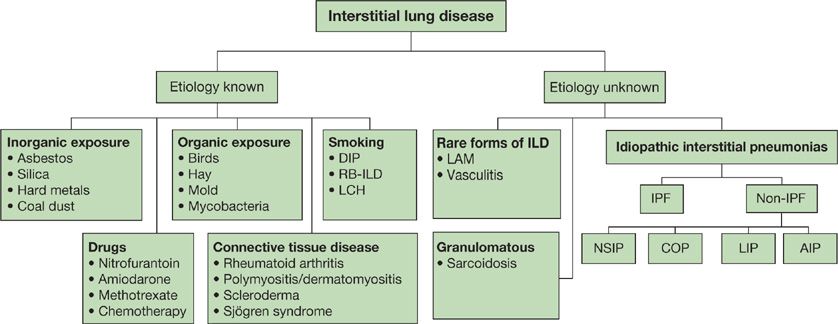










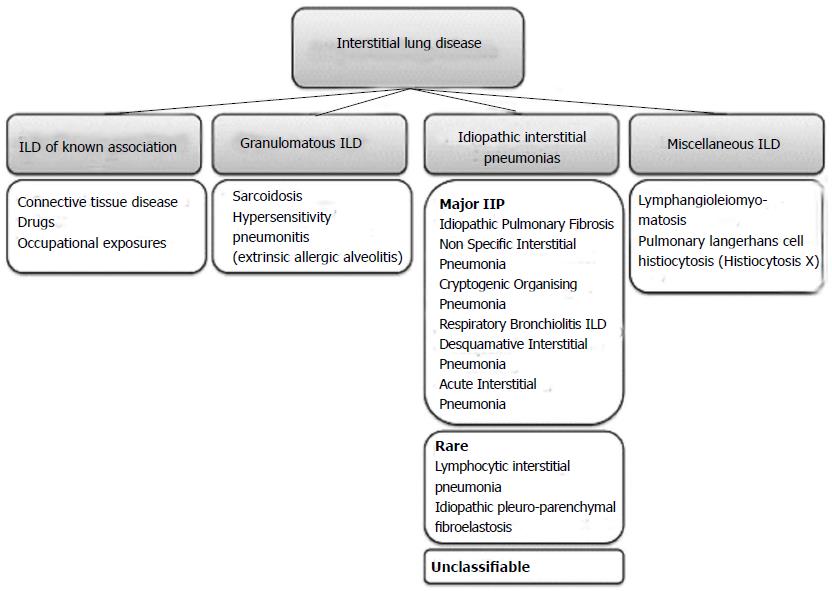
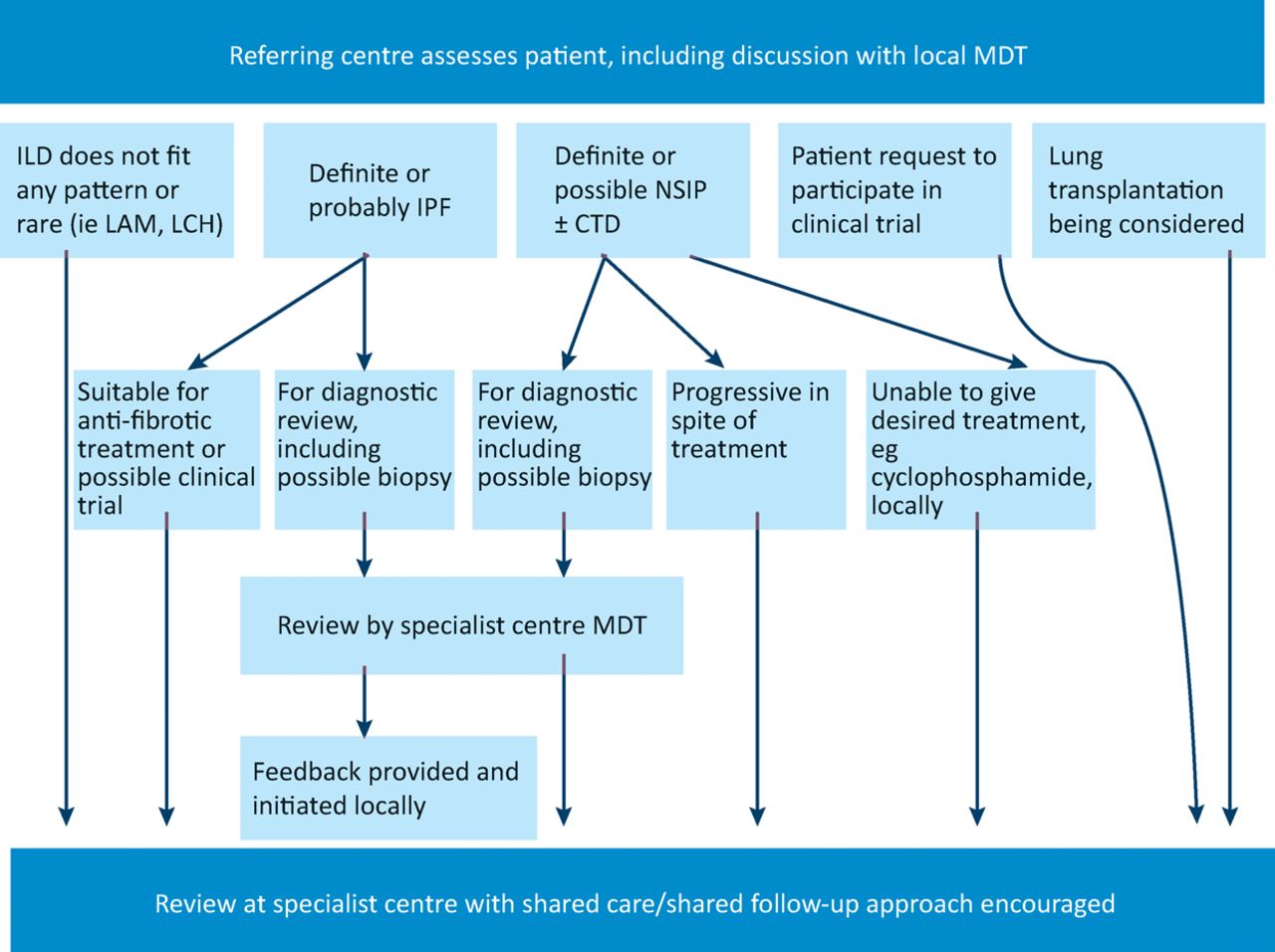







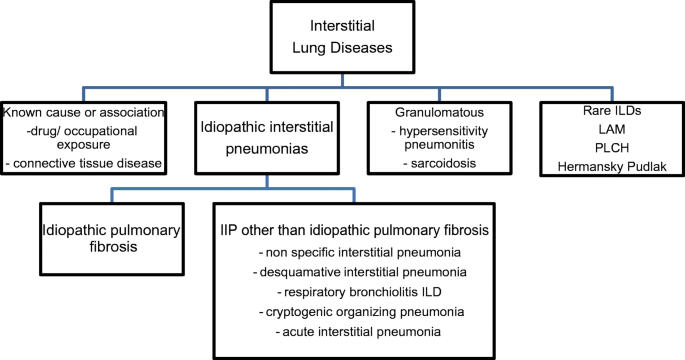
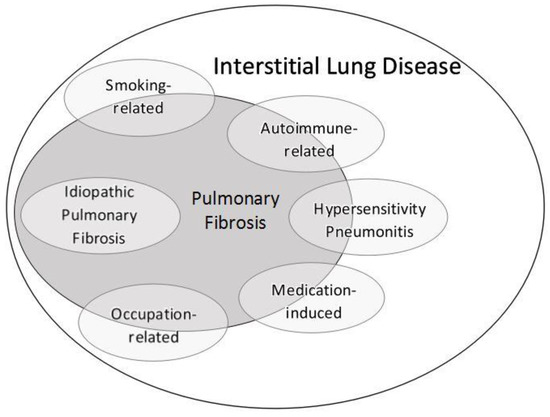











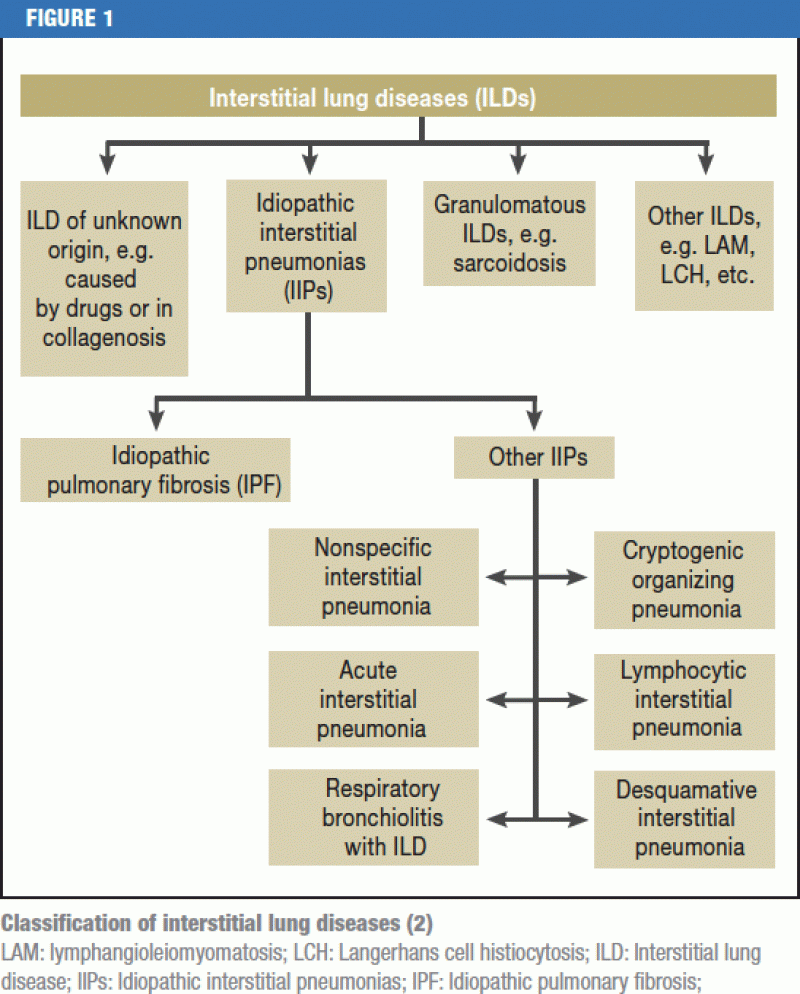
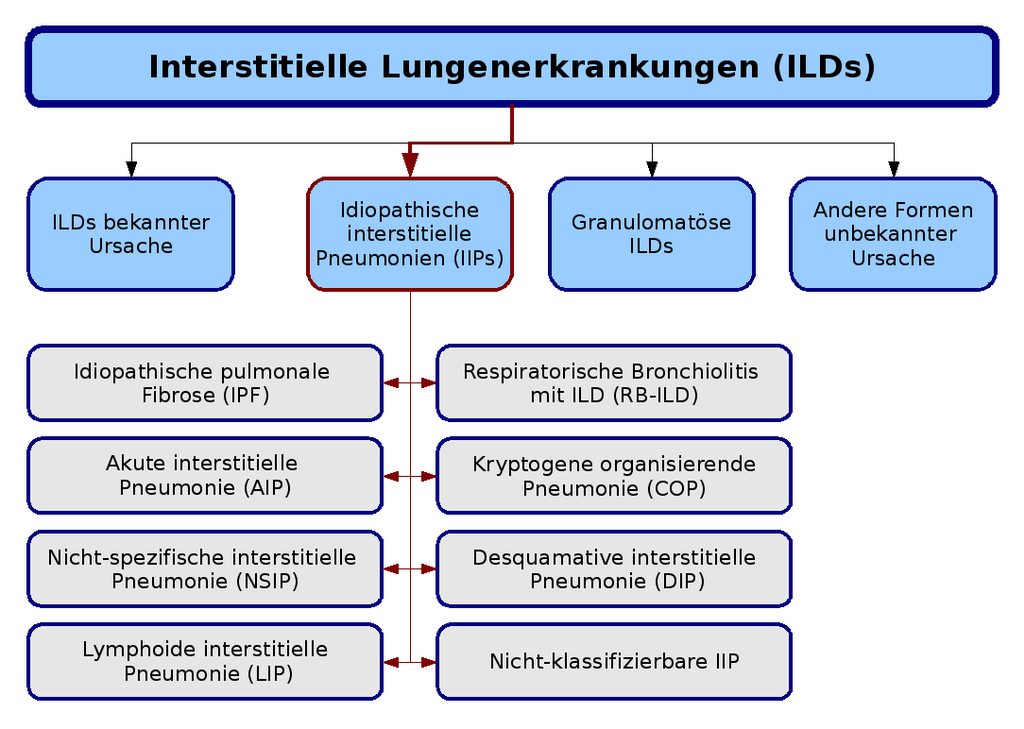



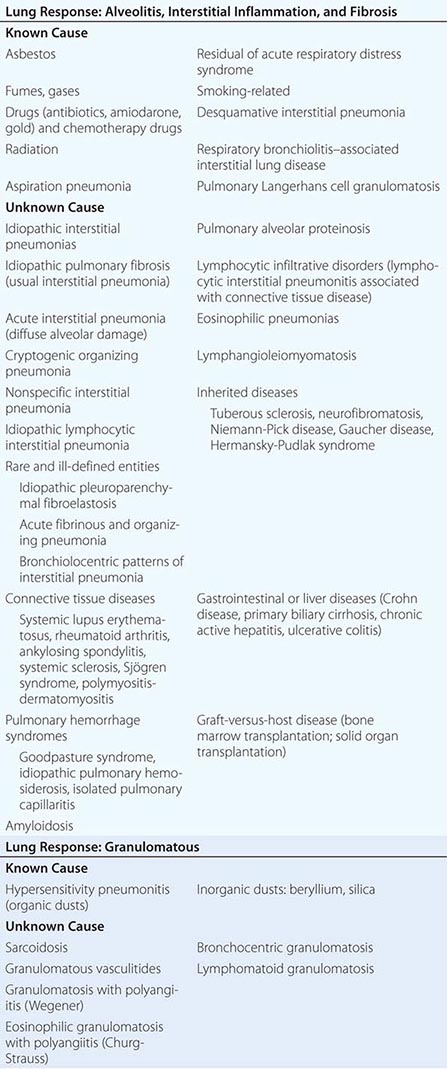

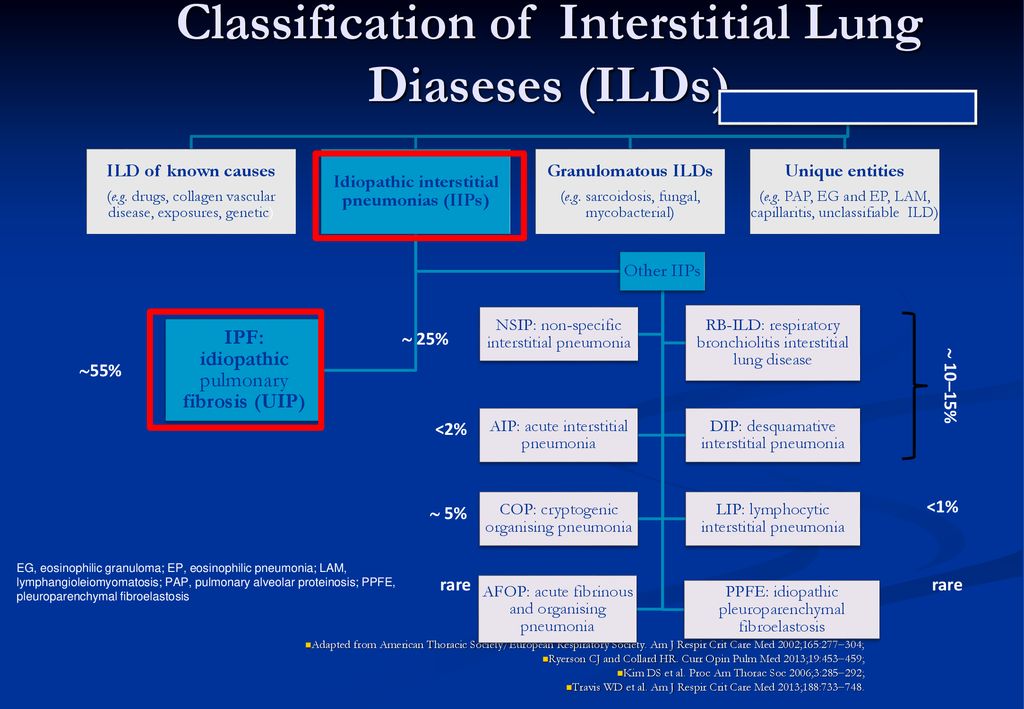
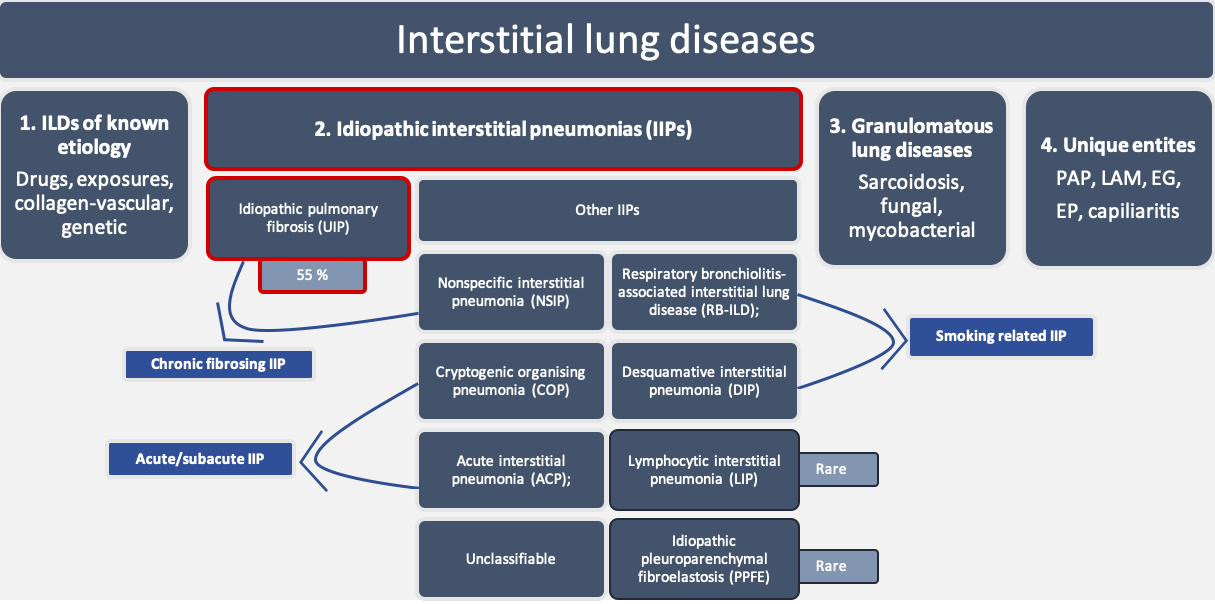
Post a Comment for "Interstitial Lung Disease Classification"